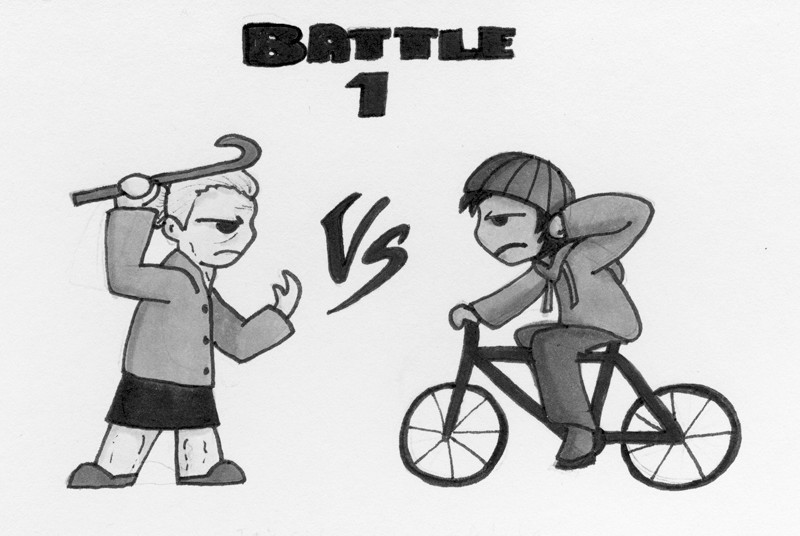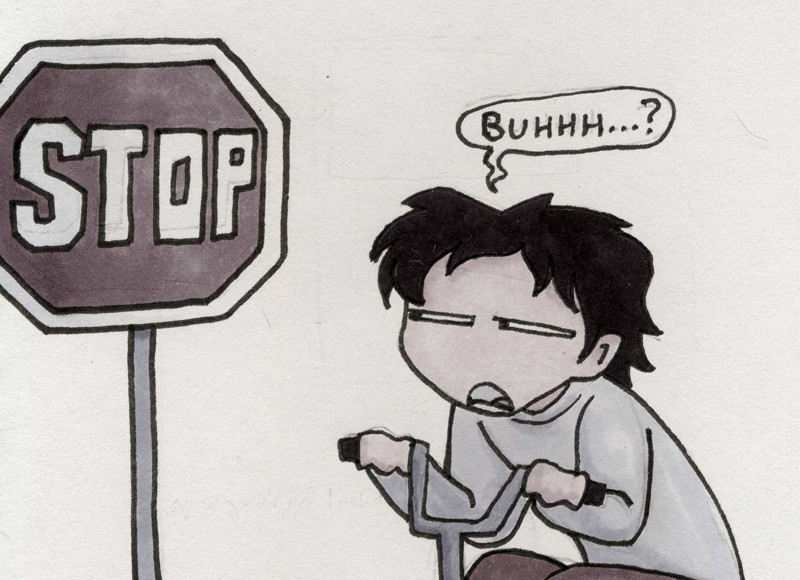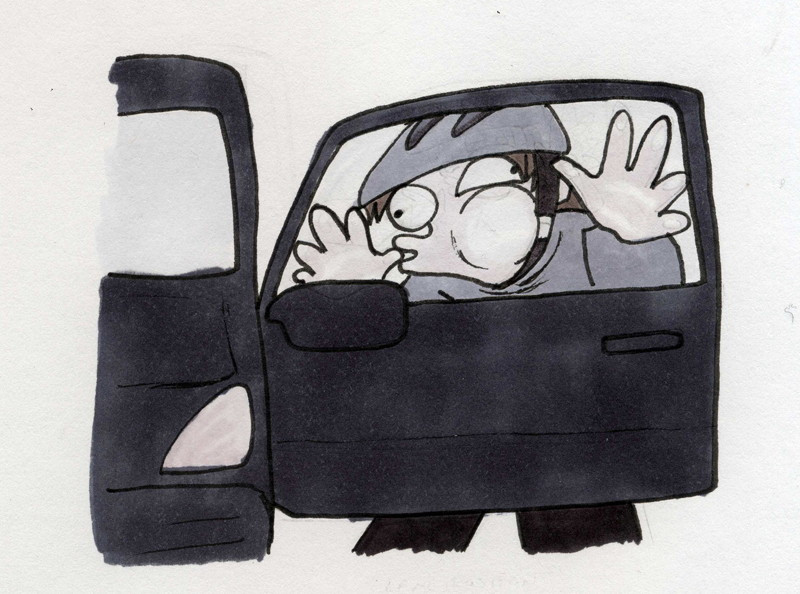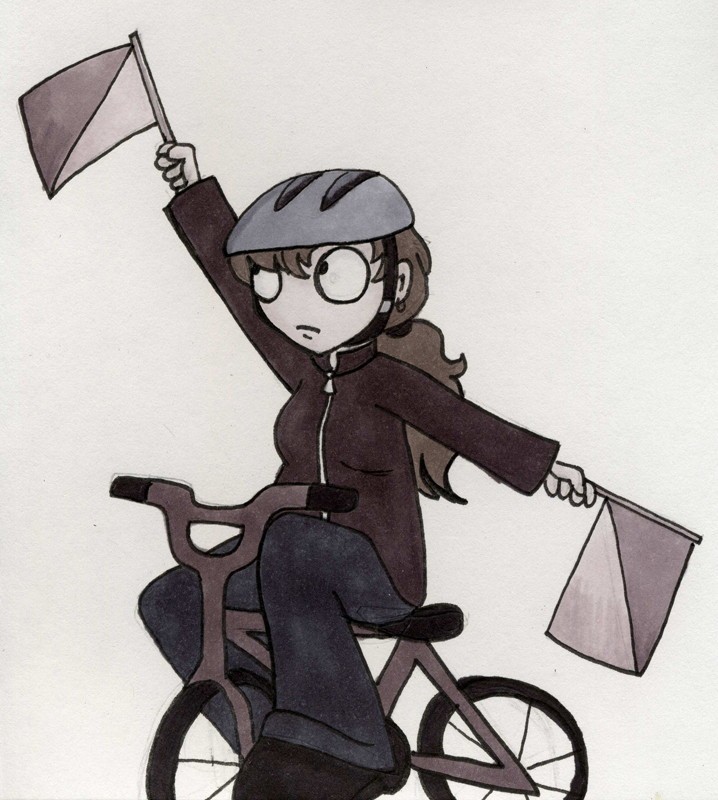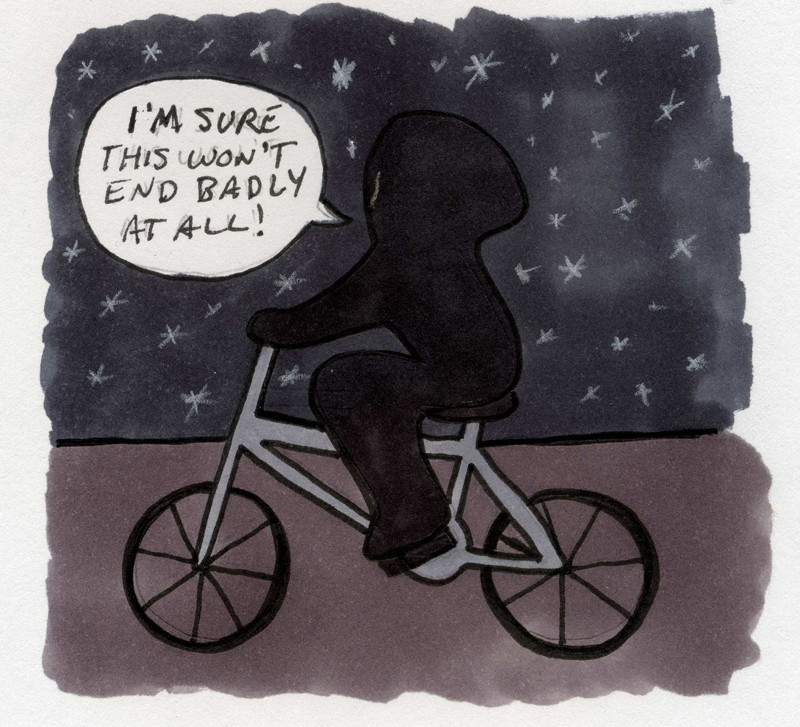How to ride a bike
Five steps to get you – and keep you – riding in style
1. It’s sidewalk, not sidebike
Let’s be honest. The actual first step of riding a bike is getting someone to run after you holding onto your seat yelling, “Pedal! Pedal!” while you cry in terror and then bail face first onto the merciless and already-blood-stained asphalt.
Assuming most of you got this annoying process out of the way several years ago, there’s another simple but crucial thing to clear up before we go on. There are going to be more tears, I think.
“The fact is that drivers are not looking for fast moving vehicles, like bikes, coming off the sidewalk at intersections,” says Dave Elmore, Safety and Education Director at Bike to the Future, via email. “They are looking at the traffic on the street.”
Or in other words: stop riding on the sidewalk, dorks!
It’s annoying, it’s dangerous and you look like a tool when you do it. It’s time to get comfortable on the street.
“The bottom line is that if you want to be treated as traffic you need to act like it,” Elmore says.
2. Stop sign/red light
Good. So you’re on the street, pedaling along, and you come up to a wondrous and confusing sight. There in front of you is a red octagon, affixed to a metal pole in the ground, with the cryptic white lettering: STOP.
Or maybe you see a set of magical hanging lights, with the top-most, red-coloured light blazing furiously.
You might be tempted to avert your eyes as from the sun or an angel and try to speed past. But like the sun or an angel, these omens exist for your well-being.
“Stop!” says Elmore. “If there is one common complaint that I hear and that I read in newspaper articles all over the world, it is that cyclists don’t respect the law.”
When you sneak through a red light you’re not just risking your own safety, you’re making all cyclists look like raving delinquents and inviting motorists to shit on us even more.
3. Lane position
Pop quiz!
You are riding along with a row of parked cars on one side and a steady stream of morning commuter traffic on the other. Which is more dangerous?
It’s a trick question - they’re actually in cahoots. It’s your job to steer clear of any altercation with car doors. The outcome of that fight can range anywhere on the scale from acute embarrassment to death. No joke.
“Cyclists need to always stay out of the door zone,” Elmore says. “What I recommend is staying a minimum of 1.5 metres away from those parked cars.”
This will place you well within enemy territory (a.k.a. the first lane of moving traffic), but don’t be afraid to claim what is rightfully yours. Resist the urge to pull closer to the curb between parked cars. The constant swerving back and forth puts you in greater danger of not being seen by vehicles both moving and parked.
4. The left turn
Now we’re really getting into some advanced stuff. You’re riding along a major street and realize that you need to turn left. There are two main options open to you, neither of which involves reverting back to your old I’m-just-a-pedestrian-on-a-bike shtick.
“The first advice that I give cyclists is that they need to plan ahead and be assertive in order to get over, especially in heavier traffic,” says Elmore.
Getting into the left-most lane will require an effective combination of shoulder checking and signaling so the cars behind you aren’t surprised when you carve through their lanes with human-powered grace.
The second option is what Elmore calls a pedestrian turn.
“This essentially is riding across the intersection, dismounting, walking (left) across the intersection, waiting for traffic to clear, and remounting and riding on,” says Elmore.
The key word in this procedure is dismount, so don’t get any ideas.
5. Night riding
With the fall of night comes the most dangerous time for cyclists. The thing to remember here is that you are not a secret agent and this is not a covert mission. Or maybe you are and it is - I won’t pretend to know everything about you.
Regardless, you need to resist the urge to wear your invisibility cloak, Agent Potter.
“At minimum you need that front light and rear blinking LED light,” says Elmore.
A good pair of lights - front and back - will run you less than 12 of your favourite beers, hopefully.
For those of you really bent on survival, there are other minor wardrobe details that will help a motorist differentiate you from all those other inanimate objects that they love to drive so near to.
“I really recommend ankle straps because when a car sees these going up and down as they approach you from behind, it is really not something that they are used to seeing and so they pay attention,” Elmore says.
Visit www.uniter.ca/blogs to read more of Aaron Snider’s interview with Dave Elmore, including more safety tips designed to keep you riding for years to come.
Published in Volume 66, Number 9 of The Uniter (October 26, 2011)

